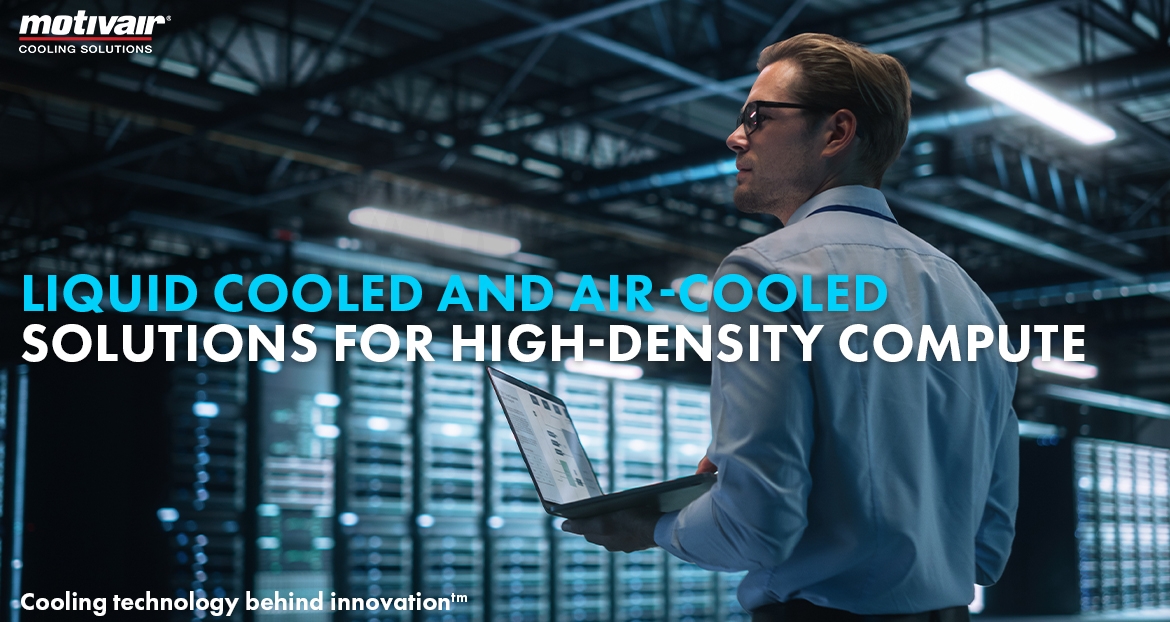Motivair Cool News
April 3rd, 2023
Data Center Cooling for High-Density Compute

As the HPC market continues to evolve, so do data centers – into mission-critical enterprises responsible for some of society’s daily necessities and groundbreaking innovations. But as those data-heavy applications continue in popularity, so do the demands on the data center and the modern processors that need to be cooled.
Data centers are now in a constant struggle of delivering high-demand services – artificial intelligence, machine learning, remote work, streaming services – while trying to be more energy efficient and environmentally friendly.
This has led to the data center industry targeting how to better cool modern chips to continue deliver those high-value services. The primary means of cooling data centers focus on a series of air and liquid-cooled options. It’s important to understand each available method and what it means for your bottom line.
CHIP PROCESSOR POWER
As supply chains continue adjusting, and data center infrastructure refreshes commence, the issue of chip power consumption needs to be examined carefully.
According to McKinsey, “In the US market alone, demand—measured by power consumption to reflect the number of servers a data center can house—is expected to reach 35 gigawatts (GW) by 2030, up from 17 GW in 2022.”
The latest generation of CPUs are consuming over 300 watts, and soon will be using upwards of 500-750 watts, and 1000 watts packages are already being designed.
Most data centers are built to be air-cooled and some data center operators have expressed hesitancy when adopting liquid cooling – whether it’s the infrastructure cost or “fear of water.”
But with more power generated at the chips, the more air must be forced through smaller areas to cool them. As the air flow increases, the pressure required to push it through increases exponentially.
Cooling can require up to 40% of a data center’s power load while servers are estimated at another 40%, according to Gartner.
Learn more: Join our mailing list
AIR COOLING VS LIQUID COOLING TECHNOLOGY
The most common liquid cooling approach from a physics perspective is either single phase, where fluid remains in a liquid form or two-phase, where fluid is boiled and then condensed in a repetitive cycle.
With liquid cooling, data center operators can leverage one of the following:
• Single-phase immersion cooling: Servers are installed vertically in a coolant bath of a dielectric fluid. The liquid does not change phase and is cooled via a heat exchanger in a cooling distribution unit.
• Two-phase immersion cooling: Servers are sealed in dielectric refrigerant like Novec, the fluid is boiled off, condensed back into a liquid, and recycled through the system.
• Single-phase direct liquid cooling: Directing water-based fluid through cold plates placed on top of various computer chips to remove heat.
• Two-phase direct liquid cooling: This uses cold plates to remove heat, but like it’s immersion counterpart, a phase change occurs, and a dielectric fluid is used.
Air cooling a data center involves using CRAHs and CRACS to move heat away from IT gear. Depending on the application, rear-door heat exchangers can also be coupled with other air-cooling methods to meet demand.
All of these technologies have merits based on the applications they are cooling. But with the rapid rise in processor thermal power, the limits of these technologies are being tested.
The accelerating change at the data center level should serve as a signal to evaluate infrastructure needs – like coolant distribution units, in-rack manifolds, quick connects, and rear-door heat exchangers – now and into the future.
Maintaining consistent and effective thermal performance at the chip level will require a holistic evaluation of cooling technology so your data centers can continue to capture improved return on capital, reduce environmental impacts, while increasing system reliability and performance.